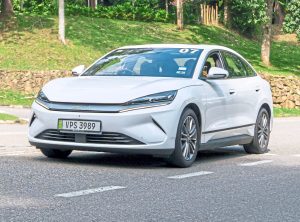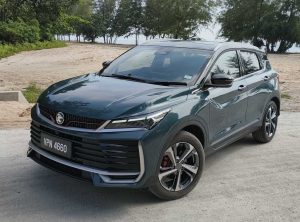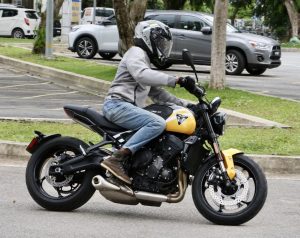A dummy made in the likeness of an average woman. — Image from VTI
STOCKHOLM: Decades of technological advances and regulatory changes have helped make car passengers safer in collisions. But women are still 73% more likely to be severely injured or die in a frontal crash than men and three times as likely to experience injuries such as a broken bones or concussions. Swedish engineer Astrid Linder is trying to eliminate the disparity by developing the first crash-test dummy prototype modeled on an average-size woman.“The injury statistics show that the gap between men and women isn’t decreasing despite the great improvements in crash safety,” says Linder, an adjunct professor in injury prevention at Sweden’s Chalmers University and research director of traffic safety at the Swedish National Road and Transport Research Institute.
She and her team in November wrapped up a 4½-year project funded by the European Commission and Volvo Car AB to create and test the dummy in a laboratory in Linköping, Sweden. It has the proportions of a female body, weighs 62kg and is 166cm tall. The team accounted for differences in joint stiffness and strength between men and women and put particular focus on the motion of the spine, neck and shoulders to replicate as much as possible how a woman’s body would interact with a car seat in a crash.
Regulations in the US and the European Union require only that automakers use dummies that resemble a male weighing 75.5kg. The rules are part of the problem, says Linder, because they don’t give companies incentives to take the rest of the population into account.
“Frankly, women should be angry,” says Christopher O’Connor, chief executive officer of Humanetics Group, the Farmington Hills, Michigan-based industry leader in crash-test dummy manufacturing, which has supplied automakers globally since the 1960s. A car “should be safe regardless if you’re a male or a woman in every seating position.”
Humanetics is working on newer dummies it hopes will become standard. It has a female dummy called the THOR-5F with 150 precision measuring sensors designed to address those parts of the body where women have increased vulnerability to injury.
O’Connor says it’s a big improvement from previous female dummies, which were basically just scaled down versions of the male models. THOR-5F is designed to resemble a smaller woman, at the fifth percentile of the female population. Even without a regulatory requirement for carmakers to use such a dummy, the company has sold a few dozen to auto manufacturers and leading laboratories, he says.
Volvo is interested in Linder’s dummy and the THOR-5F, but both require a lot of work before the company would consider making any purchases, says Lotta Jakobsson, senior technical specialist of injury prevention at Volvo.
The National Highway Traffic Safety Administration regulator in the US is working with Humanetics to improve the durability of THOR-5F’s chest, which is too soft, says Jakobsson. The first prototype of THOR-5F was presented several years ago, and it’ll be at least another year before it could be ready for purchase, she says.
“We will buy the dummies when they are good enough,” she says. “Until then, we prefer to work virtually,” she says, referring to computer simulations. “It’s a very big investment to buy a dummy.”
The cost of a Humanetics THOR device is typically about US$1 million (RM4.4mil), though it can vary a lot depending on the data acquisition system used, says Barney Loehnis, chief marketing officer of Humanetics.
While computer simulation can help accelerate automobile product development and enable a wider range of occupant sizes to be evaluated, engineers require physical tests to see how the steel, seat-belt webbing and air-bag explosions operate in reality, Loehnis says.
“Physical testing will always be required to validate simulation models and design,” he says.
It’s encouraging that protecting car occupants has moved “beyond that of a midsize male,” says Jessica Jermakian, head of vehicle research at the Insurance Institute for Highway Safety, a nonprofit financed by the US insurance industry. But simply putting a female dummy in the driver seat won’t automatically result in safety improvements for women, she says.
“We need to think more holistically,” Jermakian says.
“We need to think of ways of how we can reduce speeding, ways to prevent crashes all together, ways that we can remove that incompatibility between larger and smaller cars.”
Research published last year by IIHS found that much of the heightened risk for women in crashes is related to the types of vehicles women drive and the circumstances of the collisions rather than physical differences.
Women tend to drive cars that are smaller and lighter, and they’re more likely than men to be driving the struck vehicle in side-impact and front-into-rear crashes, according to IIHS.
Linder isn’t deterred by the challenge of moving her female dummy from a prototype to a certified tool with physiological traits that resemble a woman’s mobility patterns to provide more accurate crash test results.
That process could involve years of tests and research. She says she’s “going to do what a researcher does. Try to get new funding and continue.”












